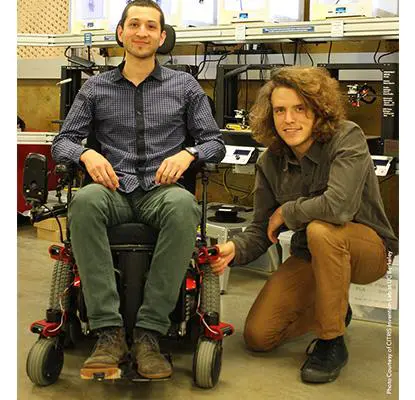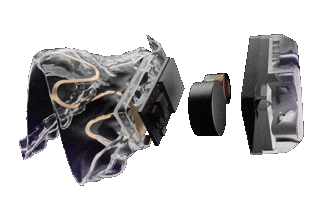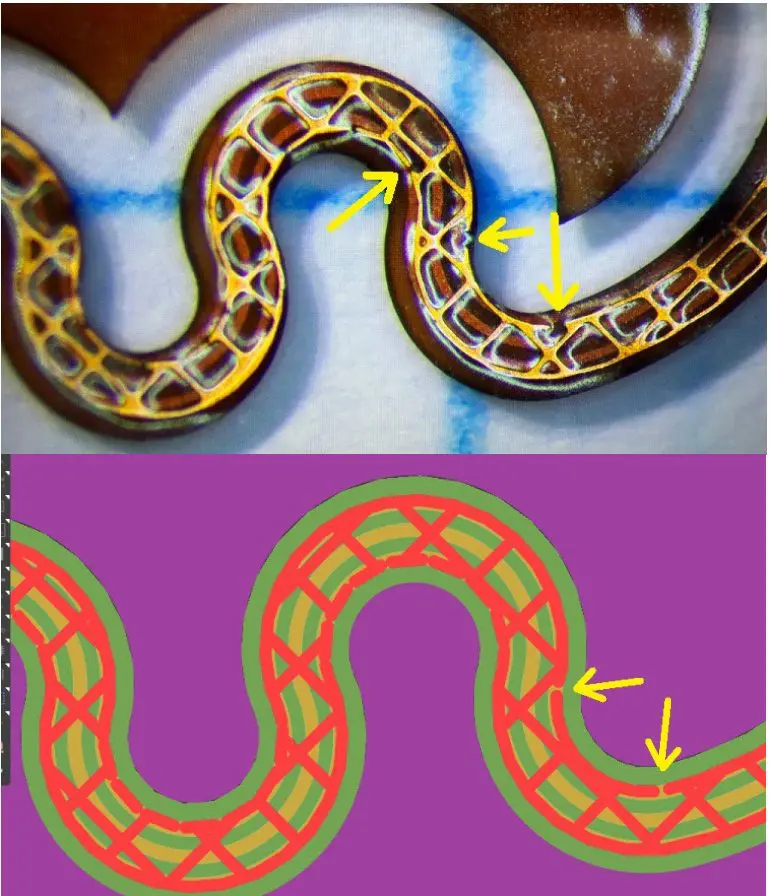Augmental MouthPad
Introduction to Augmental and the Challenge
At Simbex, it is our goal to work with companies that are developing impactful medical, health, and wellness innovations that will make a positive difference. We don’t want to spend our time working on projects that never leave the lab. It is much more meaningful for us to contribute to devices that will be used in the real world, by real people. Whether we are working on a product that helps to detect falls in the elderly or recover walking ability after a stroke, we are picturing our loved ones using the devices someday. We recognize the meaning in our work and we want to work with others who feel the same.
One such visionary company that we recently worked with is Augmental – a San Francisco-based start-up with a focus on improving digital access for all by changing the way humans interface with computers. They are dedicated to the task of re-imagining the standard hand-operated mouse and touch-controlled trackpad. In their own words, Augmental’s mission is “pushing the boundaries of how we interact with technology, building intuitive products that empower everyone to unleash their creativity”

Cofounders Tomás Vega and Corten Singer attended UC Berkeley together. The two conceived Augmental while Vega was in grad school at the MIT Media Lab.. The pair have since gone on to successfully raise venture funding and receive numerous accolades for their work, such as being recently featured in Forbes 30 under 30. They have been working on building their company and developing their first device called the MouthPad^, since 2019.
The MouthPad^ is a hands-free computer controller that can be used by anyone, but is especially useful for people who have limited or no use of their hands, such as individuals with a spinal cord injury or muscular dystrophy. The MouthPad^ is a Bluetooth-enabled, mouth-controlled device that is worn similarly to a mouthguard or a retainer. It is custom-molded to fit comfortably in the user’s mouth and contains a touch-sensitive surface located on the roof of the mouth that responds to head movements and contact from the tongue, allowing users to scroll, click, type, and direct a cursor.
Using the MouthPad^ requires a little bit of training, but after some practice, users can operate any connected device with similar dexterity and speed as with traditional hand controls. It turns out that the tongue is particularly well-equipped for this task since it is strong, capable of precise movement, and controlled by 8 muscles that are largely composed of slow-twitch fibers, meaning that they don’t fatigue easily. There are other strategic advantages to the controller being located on the roof of the mouth. No one can see when the MouthPad^ is being operated, and it is subtle, noiseless, and unobtrusive. Users can talk and breathe normally while the MouthPad^ is in place. This is important because it means that users can also use voice control like Alexa without removing the MouthPad^ throughout the day. Since the target customer may not have the ability to use their hands, they may need help to get the MouthPad^ into place–they will most likely wear it for several hours at a time, and it needs to be comfortable.
In terms of technical advancement, the MouthPad^ is a large step forward from voice control or mouthstick systems that use an external joystick operated with the face or chin. But it is also simpler than next generation brain-computer interfaces, and importantly it doesn’t require surgery. Tomás did an internship at Neuralink in 2018, where he gained a deep understanding of the advantages and technical challenges of BCI products. The following year, he conceived of the MouthPad^, which offers an augmented, cyborg-like experience of having the technology integrated seamlessly into the body without the risks and complications involved with implanted devices.

The MouthPad^ has a long-lasting (4-5hr) battery that is recharged when it is placed in the case. When in use, the device works without any wires or accessories, just the mouthpiece is needed. The battery and the circuit board that is the “brain” of the product is located in a small pod just above the back teeth, tucked under the cheek. There is an LED that indicates connectivity status. It looks like a deceptively simple device to the layperson; however, as those with a technical background can appreciate, elegance of design comes as a result of extensive effort.
The Augmental team has remained focused and dedicated to the task of product development over the last 5 years – to the point where some members of the team lived and worked in the shared workshop/laboratory space during the early days of the company; even Vega lived in the office for almost 5 years. Everyone on the small, close-knit team has become adapted to wearing multiple hats as they work toward turning their product vision into reality, doing technical development in parallel to fundraising and promotional activities. Team members mostly have engineering backgrounds, with a few business and design experts added into the mix.
In October 2023, after completing the alpha version of their MouthPad^ product and selling their first two units, the Augmental team learned about Simbex’s Phase 0 competition. They jumped at the chance to work with our team to tackle some of their persistent technical and commercialization challenges. They had successfully designed an MVP for general use, but they wanted our perspective on what it would take to turn the MouthPad^ into a more mass-produced product, and eventually even a medical device.
The Augmental application stood out among the other contestants in part because their mission and company culture aligned so well with Simbex. But there was also another reason why we wanted to work with them: they had researched our team and knew exactly how we could help them. They requested assistance with establishing commercialization strategy related to regulatory and reimbursement as well as technical guidance from the Electrical, Firmware, and System engineering teams. We were excited and honored to be able to help them.
Phase 0 Project Details
The MouthPad^ Phase 0 contest was the first of its kind in Simbex history. We built the award program with a few things in mind: firstly, provide our development team a chance to work on a project that had a unique application. We also thought it would be a great opportunity to share our expertise with a broader audience. We knew that 2023 had been an incredibly difficult year for start-up fundraising due to macroeconomic forces, and we wanted to help out a company with a worthy cause.
One further motivation for this award program was because we so strongly believe in the benefit of taking a systems-level approach to product design and advocating for starting all early-stage development efforts with a “phase 0 project”. At its core, Phase 0 is an opportunity to identify and problem-solve the most relevant product risks before any advanced engineering takes place. The most important aspect of Phase 0 is to nail down every detail of the product requirements. We use this process to discuss each feature of the product, determine how it will perform, and what areas are absolutely fundamental to the function of the device. We discuss whether features are “nice to have” or “need to have” and try to maintain a strict adherence to the minimum viable product definition. This is an important values-clarification process for the development team and can help to prevent scope creep in later stages of the project.
We sometimes have a hard time convincing young, cash-strapped companies of the necessity of the Phase 0 work to the success of their project – they often want to dive straight into full-scale development. But we believe that it is too expensive to not do a Phase 0, because this evaluation can often change the trajectory of a project completely. Doing a thorough pre-flight check can save a lot of grief—as well as effort, money, and time— in the long run. We wanted to offer a free Phase 0 to a deserving company to help boost them in their next steps forward.
The Augmental Phase 0 project was unique. On one hand, the MouthPad^ was more advanced than our typical Phase 0 candidate, because it was already on the market. However, since the product was currently in its MVP state, this was the perfect time to evaluate it. We would have a chance to provide input before the company took a possible design pivot towards converting it into a medical device and before they moved forward with mass manufacturing.
Sean Yu, Ph.D, Simbex’s Chief Architect, was the project leader for the MouthPad^ Phase 0 Project, which occurred in the first few months of 2024. He captained a multidisciplinary team that worked together with Augmental to provide advice and reports that would shape the future of the MouthPad^. Project contributors included the directors of each discipline within Simbex, ensuring that we had our best team assembled for the job.
The Simbex and Augmental teams rapidly got the project up and running and collaborated together on a combination of cloud-based tools, including Microsoft Teams, Google Docs, GitHub, and Notion. Augmental shared video clips of the production process, Simbex shared document templates, and the brainstorming and information exchanges occurred freely between project meetings. Augmental also shared samples of their circuit boards for technical evaluation. This process fostered an atmosphere of productive feedback loops and iterative refinement between the two teams.
Results and Impact on MouthPad^
The first part of the project was the regulatory and reimbursement strategy advising. The findings of these reports were needed in a timely fashion to inform the commercialization strategy that was currently being discussed in ongoing fundraising efforts. The result of this part of the project helped the Augmental team decide that they would keep pursuing the general purpose applications of the MouthPad^ in the short-term, allowing users to control a wide variety of devices, rather than focus on developing an additional product line that was limited to the control of medical devices such as powered wheelchairs or prostheses. The team decided that they may decide to pursue this direction in the future, however, the process for MouthPad^ to evolve into a marketable medical device accessory would require a longer timeline than originally anticipated.
The technical aspects of the project were completed in series. The Design Failure Mode and Effects Analysis (DFMEA) findings helped to determine the areas of emphasis for the rest of the project. Augmental had an existing DFMEA document that underwent independent review by a subset of the Simbex team. This exercise resulted in some minor corrections related to developing a consistent system of rating incidence severity and suggestions about component testing that could be integrated into the manufacturing process.
The best practices suggested as a result of the DFMEA review will help Augmental to provide clarity for anyone viewing the documentation for the first time. The new perspective of outside reviewers can be helpful in pointing out any small oversights to which the internal team has become accustomed. At Simbex, we use an agile framework, meaning that our project teams are always frequently cycling through and handing off tasks to other members, so we have some strict standards to ensure that outputs are consistent and communications are complete. Idiocentric documentation is often a symptom of a small, close-knit development team and it can cause problems further on if not addressed early.
The electrical engineering review built on the DFMEA findings. The Simbex EE team helped to troubleshoot and completed a microscope review of common failure modes of the flex circuits that could occur during fabrication and assembly. The output of this review was a report with images and diagrams describing in detail the type of faults that were discovered. Findings were themed around difficulties that frequently occur in small form-factor devices. This included recommendations related to circuit soldering, laser cutting, and etching, with advice for increasing copper alignment tolerances where possible or switching to a manufacturer who specializes in tight tolerance circuits. The Simbex EE team shared our tolerance standards and relevant design policies for future reference.

The Simbex EE team also evaluated the power consumption of the MouthPad^ to help optimize battery life wherever possible. Simbex has a long history of developing wearable products with micro power consumption, leading to products that can last for weeks and even months between charges. Examples of this can be found in our Riddell helmets and our OPOS1 project. We drew upon this experience to provide recommendations to Augmental. Our findings led to two suggestions for circuit design changes – which may lead to an estimated improvement of battery lifespan of at least 1.5x the current design performance. The importance of this improvement is that this could extend the use time of the MouthPad^ to the entire day instead of the inconvenience of the user possibly needing to stop and charge their device before they finish their work shift or school day.
The Simbex System Engineering Team reviewed a video of the manufacturing process of a MouthPad^ unit in order to provide suggestions for increased efficiency. We provided time-stamped recommendations and suggestions for improvement. An example of the feedback includes an idea for a jig that could reduce time and error in several steps of the assembly process, and web links to a recommended style of epoxy nozzle and other tools that would create a more polished finish on the surface of the device. In addition to increasing the standardization of the process, these suggestions will make it easier for the Augmental team to outsource or train additional workers to take over some aspects of the manufacturing as the demand for the product increases.
The last area of guidance provided by Simbex was related to Firmware, especially as it pertained to battery life maximization and power management. Recommendations included a method for developing a power budget that can rapidly assess which states result in consumption beyond acceptable limits. A few very specific suggestions included settings of certain components that may limit unnecessary power drain during non-use. The Simbex Firmware team paid special attention to the MouthPad^ BLE (Bluetooth Low Energy) configurations. The expertise in this area has been built at Simbex over 20+ years of product development using Bluetooth and fine-tuning parameters to push the limits of performance. The Augmental team benefited from this expertise with a set of highly specific recommendations for modifications to optimize performance while balancing power consumption.
The final set of firmware recommendations included tips on how to debug any performance issues with the MouthPad^ using analysis tools. The Simbex team regularly incorporates the use of these tools into our design process, and we shared not only tool recommendations, but also our process for using these during design and code reviews. The firmware team ended their portion of the report with advice on performance testing protocols using GPIO pins and LEDs to make troubleshooting even more streamlined.
The culminating report was reviewed through in a closeout meeting with both teams present to walk through the material and dialogue about any additional questions. The feedback from the Augmental team was that their experience with the Phase 0 competition project was very helpful to advancing their development process to the next step. To quote Tomás, “We’re extremely grateful for the work you’ve done to support us in our journey, and hope that we find ways of working together in the future.” That’s exactly the outcome that the Simbex team was hoping for and we are also excited to continue working with the Augmental team.
Lessons learned by Simbex about phase 0 competitions
The experience of our first Phase 0 competition led to some key takeaways for the Simbex team will take away for future reference. The first finding was how important it is to work with clients who align with our values and work style. The Augmental team was flexible, collaborative, creative, eager to learn, and quick to take suggestions onboard. They asked good questions in order to clarify the discussion points and were an open book when it came to providing information that we requested from them. They were not passive participants in the project–they worked in parallel with our team to make sure that our efforts were spent on the most effective areas. There was synergy between the teams which reminded us that this is exactly the type of partner that Simbex loves working with.
Another learning that Simbex made was the enjoyable flowstate that comes from working on a project that fits squarely within our area of expertise, while still being innovative enough to keep the work novel and interesting. This Phase 0 project consisted mostly of reviewing and recommending, not a lot of traditional development work. But because each of Simbex’s teams of experts was able to review and provide commentary in a logical progression, we were able to build on the findings of the previous section and pinpoint very specific areas for improvement. We were able to draw on our reserves of expertise and we did not need to do a lot of basic education since we were working with a client that had such a technically capable project team. These factors allowed our team to make meaningful contributions and be confident that the Augmental team would be able to execute on the plan moving forward.
Lastly, the Simbex team enjoyed working on this project because we caught the enthusiasm and vision of the Augmental team and recognized the potential for the MouthPad^ to be a game-changing tool in the lives of people living with upper extremity limitations. This project was a worthy cause and our team was able to appreciate how our work helped the MouthPad^ reach a valuable inflection point in the development process.
Conclusion and Next Steps
In the months since the project, we have enjoyed watching as the world has caught on to possibilities offered by the MouthPad^. It is already changing lives. The Press tab of the Augmental website is full of news stories of users who have been able to increase their productivity at work, connect with friends, achieve their dreams of going to university. The Augmental team won the best pitch award at the Consumer Electronics Show in January, which has increased the buzz around the product. International press outlets including the BBC and WIRED Japan have also featured stories with the MouthPad^. We are all watching eagerly to see where Augmental goes next.
In the meantime, at Simbex, we enjoyed the MouthPad^ Phase 0 Contest so much that we will continue to offer the contest annually in the future. If you are a part of a product development team that is interested in entering, reach out to our business development office to ask for details on how to apply for the next open round. We are looking forward to applying our learnings from the previous project to work on your innovation. Augmental set the bar high, but we are looking for more teams like theirs, with members who are ready to collaborate and who have a well-defined goal that we can make significant progress towards. We are excited to help push more impactful products into the real world. If you think you are a good fit after reading this case study, we want to hear from you!




